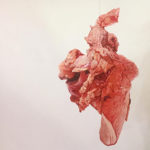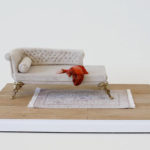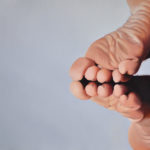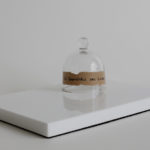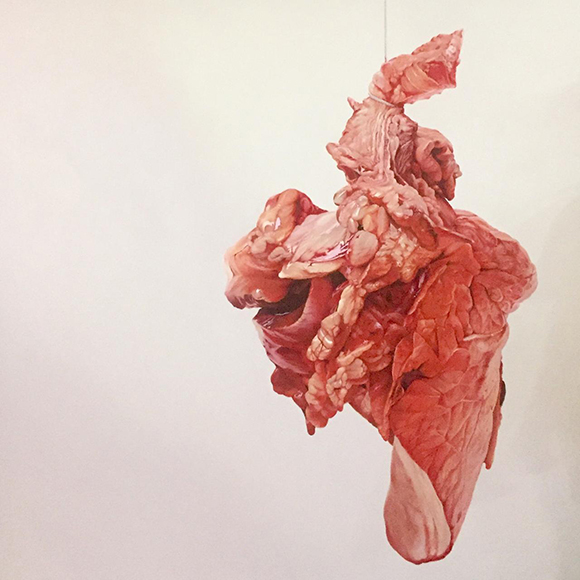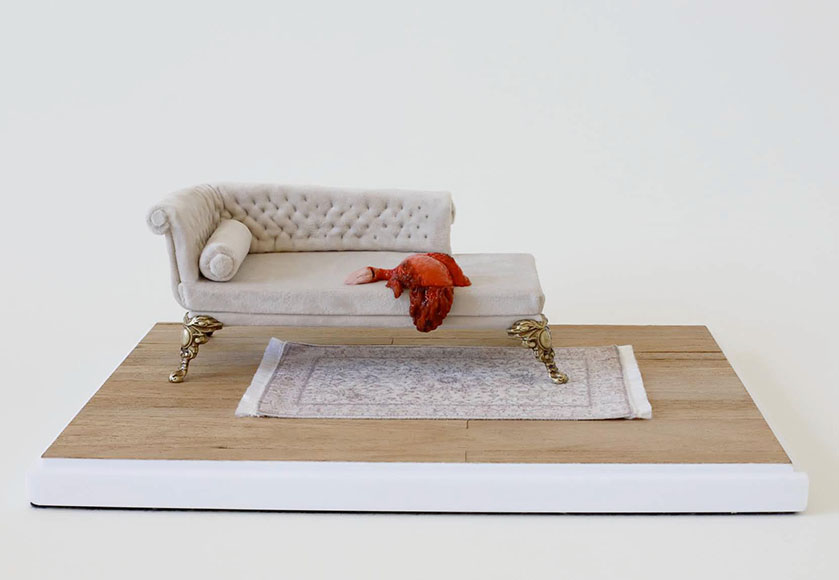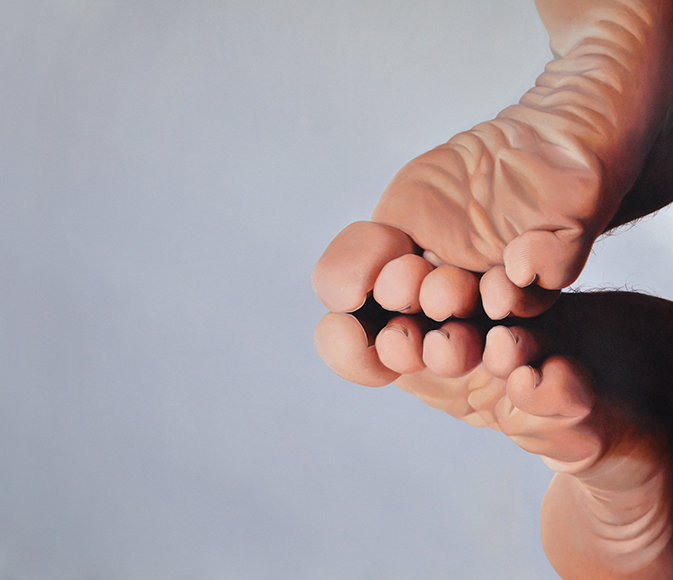The visible in his duality of seeing and looking in front of a superexhibition and a plurality of means and languages, from the most varied ways, provides material in this art that starts by the composition of the scene (or would it be the purchasing of these materials?), the photographic act, the oil painting. With it, reflexion, analysis, criticism, in a process so that the work in this pathway to the spectator is put in a tension coming from, in the beginning, the artist’s personal imaginary in his staging, until it is materialized as a painting, where, before the surface in its realistic images, the question is revealed: “what is reality?”, “what is real?”. From this painting, the visible or the distortion of the visible is discussed, in which this statement by the artist is accurate: “I like painting that, in the first glance, looks like a photograph, but in the next seconds, this is soon undone, and the painture reveals itself. This way, I keep on creating the outline of the real within my work, as a type of parallel reality, this borderline between painting and photograph. In my painting, reality is reinvented, manipulated; it is a subverted reality. I don’t use preexisting images – I create images so that this image becomes painting. The construction of the real within my work, I want it as a type of parallel reality, this borderline between painting and photograph”.
Fábio Magalhães was born in Tanque Novo, Bahia, in 1982. He lives and works in Salvador. Throughout his career, he performed individual exhibitions, the first one in 2008, in Galeria de Arte da Aliança Francesa, in Salvador. Afterwards, Jogos de Significados (2009), in Galeria do Conselho, O Grande Corpo (2011), Prêmio Matilde Mattos/FUNCEB Award, in Galeria do Conselho, both in Salvador; and Retratos Íntimos (2013), in Galeria Laura Marsiaj, in Rio de Janeiro. He was selected for the project Rumos Itaú Cultural 2011/2013. Among the collective exhibitions he participated in are: Convite à Viagem – Rumos Artes Visuais, Itaú Cultural, in São Paulo; O Fio do Abismo – Rumos Artes Visuais, in Belém (PA); Territórios, Sala Funarte, in Recife (PE); Espelho Refletido, Centro Cultural Helio Oiticica, in Rio de Janeiro (RJ); Paraconsistente, at ICBA, in Salvador (BA); 60º Salão de Abril, in Fortaleza (CE); 63º Salão Paranaense, in Curitiba (PR); XV Salão da Bahia, in Salvador (BA); and I Bienal do Triângulo, in Uberlândia (MG), among others. Among the awards he received, emphasis to the Prêmio Funarte Arte Contemporânea – Sala Nordeste Award; Prêmio Aquisição Award and Prêmio Júri Popular Award in the I Salão Semear de Arte Contemporânea, in Aracaju (SE); Prêmio Fundação Cultural do Estado Award, in Vitória da Conquista (BA), and Special Honors in Jequié (BA).
In your work, there is a process before the work we see. From a sketch, or at least a mental deflagration, going through the butcher’s shop, the purchase of meat and viscera for human consumption, the installation or a performance in its staging for the act of construction of an image through the embalm with plastic (another meat?), reaches the photograph, and from this to the painting in large canvases. All this pathway is part of the work. But we only see the canvas. What can you tell us about this path, its relevance and hideout in the work made as a painting?
In my work, there is a type of flattening of these steps. That’s why I present as a final stage an image of oil on canvas. The previous procedures, as staging, photograph, among other resources used, are mechanisms that arise from an idea created by me. In this sense, these stages are condensed, not being necessary to describe them separately. I intend to present images with this that may reach significations when seen by the other person.
Describe these stages, not as stages mentioned, but as the sensorial process to obtain your painting.
The production stages of my work are defined from strategies created for sensitive constructions that emerge from experienced stories or lived in our day to day. This differs from, for example, the sensorial processes present in the work of Lygia Clark and Oiticica. My creative process is designed by a triad that I identify by three moments: staging, photographic act and painting. Between one moment and the other, there are visual qualities and meanings that are transformed and re-signified. Some subtlenesses, in its turn, are present in the dimension, in the chromatic values, in the spatiality of the composition, among other elements that make visible what we may feel when seeing an image.
In this sensorial process, do you seek to obtain with your works metaphors of a personal imaginary? What would it be?
When I resort to my imaginary to create what we could call metaphors of a body-image, I believe it is about strategies I use to bring closer together the private universe and the common sense of the human nature. When presenting these images in painting, I intend to draw attention to the actions, many times incomprehensible, that the man faces in several parts of the world, whether they are close, distant, or in a virtual state.
Your work starts from something concrete, the figure, but it reaches distortions of this reality. It is a work of the figure and not figurative with your invented, manipulated, subverted reality? That’s your statement: “I don’t use preexisting images – I create images so that this image becomes painting”.
My work starts from an idealized image, thought out to exist in painting, that’s why I use this statement to affirm that I create scenes so they become paintings. These scenes are built with real elements, like blood, for example, because I need to observe the “redness” of the red in order to act as a painter. The pulse of this color guides me when I apply the paint on the canvas.
There is also in this process the use of photographs of parts of your own body in the scene you build. In fact, your body is an essential element for the dramatization of the scenes. Life and work, work and life constitute one single body for you?
The use of my body, in some scenes, is due to technical strategies, it is not about an autobiographical reference. I think in a body-image, a sort of avatar, where the observer may go through these images and reflect upon the existential relationships: man-animal, life-death, civilization-savagery, order-chaos, among others.
later, the images photographed reach the painting. Elements are removed or added, and in a way that, even with the whole technique, it is far from being a reproduction of the reality. The technique is flawless, traces, colors, volumes, spatiality. What emotion and feeling do this last part have on your recreated images? Or would they be created? From subjective and symbolic? Previously, there were the meat and the body, with you in the image. Does this constitute a memory of the body?
All stages are important for my work; however, the act of painting is the moment I carry out choices that are specific of the realistic painture process, they are meticulous and calculated. Each layer of color added to the canvas is conducted by observations that require constant attention. Thus, the images are created. The subjectivity arises from the encounter of the image presented and that one who sees it, a work that opens to multiple intepretations from the individual memory and alterity.
Is the body an obsession? Or a desire? A support? Or your deconstruction is what allows, with your exhibited parts, the construction of your poetry?
The images I paint are ideas that arise for the creation of a body-image; maybe it can be said that it is about replicating the human nature. To the compositions painted, I add elements that could be of a body, but with these actions I propose a subversion of what we understand as “being” and its body. The paintings are for me as places for daydreams in images, more than a support.
Are we facing a painting that creates a spatiality without abdicating the original references of a preconceived image?
I think the pictoric space as a place of happenings, a place without rules, where I create my own rules through choices that arise in the act of painting or in the propositions sketched previously. Thus, images are redimensioned and inserted in a pictoric spatiality.
You talk about your process as “simulation of the act”. We are facing a fiction where the simulation of the “scene” is given and reproduced, inquiring about “representation”. It has already been said as a significant tendency of “tampering” of the image and “disorder” of the real?
The simulation of a scene for the photographic act is a method I use to materialize ideas thought for each series, going through technical ways until achieving its state of paintwork. The realistic painting I present as a result of my creative process works as an unsettling element to those who see it.
In 2014, Superfícies do Intangível [Surfaces of the Intangible] brings the double in the double images. A game of mirrors. There is an statement by you that your work speaks about the “unreal, things that can’t be seen”. Can you talk about this? About the image being produced before and after – in the sense that, since the photograph until its further reading, is the intervention of the author constant?
When I talk about unreal in my work, I’m wanting to present certain psychic conditions that are present in the “being”, and it is common to all of us. Therefore, in the series Superfície do Intangible, the mirroring of an “blind Narcissus” deviates to other understandings about the double and the games of mirrors, because, with the approximation of its double in the works, I void the tangent that determines the encounter of image and reflex.
At the same time your art does not “represent”, it presents a personal, subjective vision of the artist about the object portrayed. For some, you are a hyper-realistic painter. Others think that, in your poetry, you are in search for a visual fact. How do you relate to these definitions? Definitions that embrace, since the observation about your technical determination until the subjective conditions in your painting. Do you see as possible to define your painting with personal reflexions on the art and the present, built by faultless technique of color, metaphors and associations? A work in your image resulting from images so that the work exists as visuality?
I use the realistic painting technique with the objective of creating a visual unsettledness in reality. Facts that never existed, but which are susceptible to being seen as real or possible associative interpretations in each one. The color, technique and resulting images reach the Other, and make resurge other images stored in the memory of whose who see them.
Could not this crossing of stages in order to understand and to be understood, feel and be felt, be also transformed in a work in progress of your work? Another work to be presented isolated or together with the canvases? A videoart?
Each stage of my creative process is conducted by one idea; however, the procedures adopted so far contribute to new discoveries that are condensed in only one image: the painting. In this moment, the presentation of this painting is my primary way of exposing the work. In the future, other projects may arise, in which painting may give place to other means.
Since 2011, you create a construction of a real in itself, within the work, in a borderline at the first moment between the painting and the photograph, in the series Superfícies do Intangível, Latências Atrozes, Fronteiras do Devoluto, O Grande Corpo, Retratos Íntimos. In all those, there is the technique, the process, the use of colors. What are the limits of the perception and their process in the art are doing now?
I think that the real is not created, it exists. I make paintings to materialize ideas. That way, I believe that my artistic production may contribute to the reflection on the existing realities in every person and those that may be activated by the encounter with the work.


